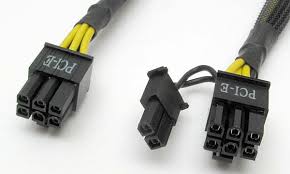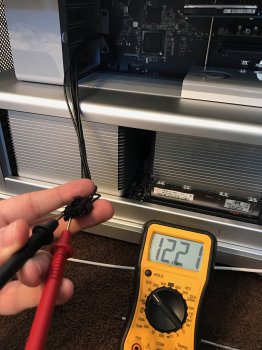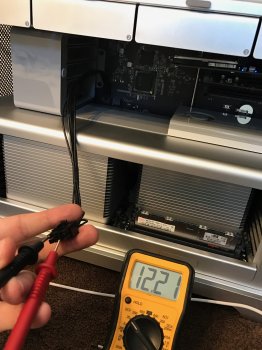Since some useful threads regarding graphics cards and the PCIe auxiliary power plugs have been closed, I'd like to open this one up for discussion and information on the actual power limitations for the Mac Pro PCIe expansion bays.
Apple's official rating (seen on the current Mac Pro tech specs page, and any other Apple literature regarding PCIe expansion) only indicates that a combined 300w is the maximum limitation on all PCIe slots. Whether this includes the aux PCIe power or not has yet to be determined.
If the aux power is piggybacked from the PCIe expansion slots, then running a high-end graphics card with 250w+ TDP would theoretically be possible, assuming the rest of the slots are empty or don't contain cards that draw more than the allowed spec. If the aux power is not included in the 300w it would be advisable to limit your graphics card choices to cards that draw under 225w (75w from PCIe slot, and 75w presumed limit of each aux plug) for stable operation until the exact limitations of the logic board traces to the aux plugs have been determined.
Any info/links/stories regarding the actual Logic Board trace layouts or limitations would be a great contribution towards finding the exact limitations that we should be setting for Graphics Card use and other PCIe expansion.
Apple's official rating (seen on the current Mac Pro tech specs page, and any other Apple literature regarding PCIe expansion) only indicates that a combined 300w is the maximum limitation on all PCIe slots. Whether this includes the aux PCIe power or not has yet to be determined.
If the aux power is piggybacked from the PCIe expansion slots, then running a high-end graphics card with 250w+ TDP would theoretically be possible, assuming the rest of the slots are empty or don't contain cards that draw more than the allowed spec. If the aux power is not included in the 300w it would be advisable to limit your graphics card choices to cards that draw under 225w (75w from PCIe slot, and 75w presumed limit of each aux plug) for stable operation until the exact limitations of the logic board traces to the aux plugs have been determined.
Any info/links/stories regarding the actual Logic Board trace layouts or limitations would be a great contribution towards finding the exact limitations that we should be setting for Graphics Card use and other PCIe expansion.
Last edited:






